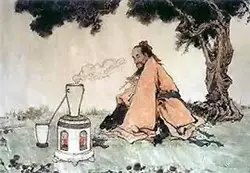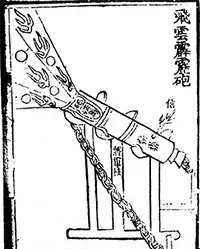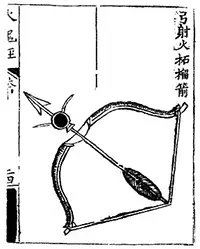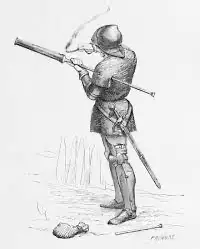The Invention and Early History of Gunpowder
Gunpowder was an invention of unintended consequences. In an example of supreme irony, the creators of gunpowder wanted an elixir to cure illness and prolong life. Indeed, one of the early names of what would become gunpowder was, in English, "fire medicine." 
Historians generally credit Taoist monks in China with the invention. The monks mixed charcoal, saltpeter (potassium nitrate), and sulfur and discovered that the mixture would burn and, further, explode. Rudimentary gunpowder was born. Despite the pacific intentions of its creators, gunpowder soon emerged as a weapon of destruction. The first known use of gunpowder as a weapon is thought to be in the early 10th Century, during the Tang Dynasty. A chemical formula (with saltpeter being far and away the most prevalent ingredient) for the incendiary combination appeared in the mid-11th Century. (Some early combinations included other ingredients, such as garlic and honey.) Early military uses included the fire arrow, fired from a bow or crossbow with the shaft of the arrow carrying a bag of gunpowder. Larger versions existed alongside progenitors of rockets and cannons that were handheld. The range on such devices was recorded as several hundred feet. Use of such weapons was not confined to land-based combat: Some accounts record naval battles that featured sailors using fire arrows to turn back attacks. Later warships sported trebuchets hurling thunderclap bombs at enemies.
The use of fire arrows continued for centuries, from Song times through the Yuan years and on into the centuries of the Ming Dynasty. Chinese soldiers built bombs using gunpowder and also crafted progenitors of guns known as fire lances, which fired bullets, pebbles, and other projectiles. All of these technologies made their way to the West by way of battles between European forces and Mongols, to begin with, and then other Asian powers. As the use of gunpowder widened in variety, the size of the weapons using that gunpowder grew. Punctuating later medieval warfare were cannons, some of massive size. As with fire arrows, great powers used cannons not only on land but also at sea: Cannons dotted the bows of warships. Gunpowder use was not exclusively in warfare. Fireworks also used gunpowder. As well, a large part of the history of mining and tunneling involved gunpowder and other explosive devices. |
|
Social Studies for Kids
copyright 2002–2024
David White







